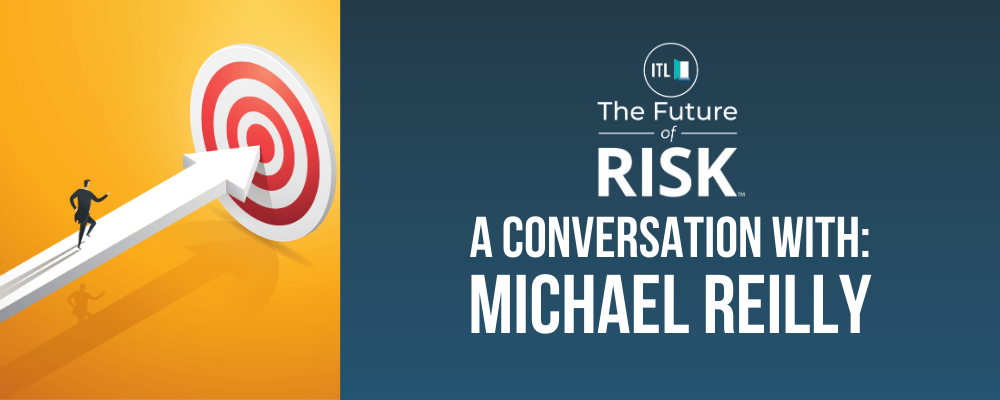|
|
As Chief Product & Technology Officer (CPTO), Jess leads Duck Creek's product vision to drive value for customers, partners and system integrators. She is a champion of improving the customer experience and leads with a forward-thinking attitude toward deepening the connection between products. Jess has more than 15 years of experience delivering B2B products at an enterprise scale across multiple industries. |
Paul Carroll
You’ve written for us about the need for personalization in insurance. Could you start us off there?
Jess Keeney
At Duck Creek, one of our missions is to humanize insurance technology. We're in the business of providing protection for people and businesses, and you can't do that without personalization. It's key to understanding buying patterns, making sure we meet the customers where they are, reducing the burden by making it easier to understand what that protection is, and understanding what coverages we can provide and what the risk factors are for the buyer and for insurance carriers.
Personalization also leads to increased efficiency and what I like to call “higher-reward work” for human workers. It also improves accuracy for insurance companies.
Paul Carroll
How does generative AI fit improve that personalization?
Jess Keeney
With its natural language processing, Gen AI can communicate in human form and at a much larger scale than we've seen before — and in real time. It’s going to help in lots of great ways.
One of the areas is in summarization or categorization of information -- at scale and faster than a normal human pace, also making it more digestible for the people who are consuming the information, while making sure it’s presented within the normal workflow without adding a delay.
That improvement can show up in anything from how we're assessing and processing claims, to how we're underwriting policies, to how we're collecting premiums, and ultimately making better-informed decisions.
Paul Carroll
It seems to me that there are two main ways that Gen AI will contribute to personalizing underwriting. You’ve briefly mentioned both of them. First, the underwriter gets more information faster. Could you talk a bit about how that plays out?
Jess Keeney
You can incorporate more data sources without going through manual processes. You can improve the thought process of risk analysis, how you look at historical risks, and incorporate new risks from any new dataset. And those datasets are prolific and pervasive across the ecosystem, whether it's the Internet of Things (IoT), including telematics, or really anything that can allow insurers to adjust a premium based on actual behaviors.
Obviously, the prime example of what we can now track is driving patterns. But more and more, we're seeing computers interpreting visual information, satellite information, wildfire information, anything in the geo- or economic-political climate that would have an impact.
Another use case is how insurance carriers are evaluating and prioritizing new business. They have the ability to set the right priorities. What should we be processing first because it might have a greater impact on our profitability? What is a faster detection of fraudulent activities to reduce the risk of financial losses?
Paul Carroll
The second piece I wanted to ask you about is what you refer to as the higher-reward work: the idea that if you take a lot of the manual stuff off my plate then I can do other things that would personalize the underwriting and lead to better decisions.
Jess Keeney
That change allows you to have a better understanding of the business and what's going to give you a competitive edge. You get a better understanding of the market trends, of what's coming. You have more time for understanding changing customer behavior and can test to see what’s going to result in a different buying pattern. You can inform product development and provide insights into pricing strategies because you're not sitting there doing manual repetitive tasks.
You’re looking at better engagement with the underwriter, better job enjoyment, reduction of repetitive costs, also potentially reduction of human error. You’re removing operational cost, and people enjoy working more on strategic application of their thought process and how they can help the business.
Anything that can be automated should be automated. And that gives us a lot more time to focus on the newer complexities that we should be getting ahead of.
Paul Carroll
Insurers worry a lot about the talent gap, but people who are enjoying the work more are more likely to stay, and it becomes easier to recruit people, right?
Jess Keeney
If you talk to people graduating from college and say, “Hey, do you want a job where you're doing the same set of manual tasks over and over again?” not a lot of people are going to jump at that opportunity. But if you go to that same group and say, “Hey, do you want to use artificial intelligence to really understand how to do customer segmentation and understand new buying patterns for people of your generation?” that's a far more enticing job offer.
GenAI can help new talent and the new generation enjoy work because it spurs more meaningful and creative work for everyone. Also, if used properly, it can help enable more fulfillment and lead to a more engaged workforce that has opportunities for all.
Paul Carroll
I’ve asked you about two areas. Are there others where you see Gen AI playing out in underwriting?
Jess Keeney
The other obvious one is better customer support and feedback. If you give underwriters more time, they can see where they might be losing people out of the funnel, where people are not concluding with a purchase. You can also use a chatbot or do something in human language form at the spot in the cycle where people are dropping and ask, “Do you need more explanation? Do you understand what this means for you? Do you understand the risks? Do you need more protection?” Even if you don’t have an actual human asking those questions, you’re creating an avenue to offer additional products and services if they're in the wrong one. You also create cross-sell or upsell opportunities because you understand the customer better.
Paul Carroll
That's interesting. Somebody a while ago told me that the interesting thing to her about generative AI is that, while AI always had a brain, it now has a mouth. If an underwriter decides, let’s say, to turn down a risk, they might want to offer some explanation that could create another opportunity, whether then or down the road. But that takes time, and there are usually more pressing priorities. With Gen AI, you can have it generate an explanation that can give you a pretty good starting point and greatly reduce the time the underwriter spends on that explanation.
Jess Keeney
Exactly. I think of this like something that has probably happened to all of us in our online shopping. You get to checkout and decide you don’t want something. Two days later, you get prompted: “You left something in your cart.” When you return to the site to look, you maybe buy that product or purchase something else while you’re there.
I think that is where we're going with insurance products, as well. If you're in the wrong area, you're not going to complete that funnel. So, what can the insurer offer instead, because you have a better understanding, based on customer segmentation and understanding the personalization that you've offered them? What are the other products that they might be willing to work with you on?
Paul Carroll
Any final thoughts on how AI can improve underwriting?
Jess Keeney:
The only other thing we really haven’t focused on is just making more informed, better decisions.
Paul Carroll
It seems like this is a time when that message resonates even more than usual, because underwriting results have been so bad in so many parts of the industry in recent years, especially in homeowners and auto.
Jess Keeney
Agreed.
Paul Carroll
Any Final Thoughts?
Jess Keeney
We are here all day every day because we want to serve people in businesses, and underwriting is obviously core to that. The best thing we can do with a new technology like Gen AI is to embrace it and figure out how to leverage it in the best way possible. Usually, new technology is met with fear. But the faster we can understand the best use cases for generative AI and implications for underwriting, the better.
Nothing has ever seen this sort of pace of adoption. It's going to be amazing.
Paul Carroll
Thanks, Jess.









